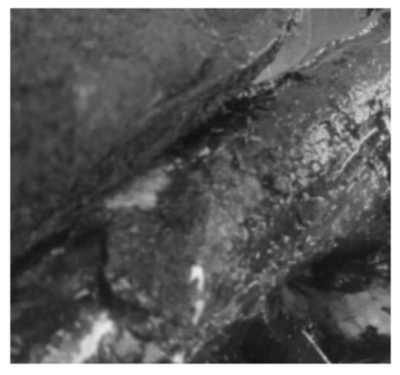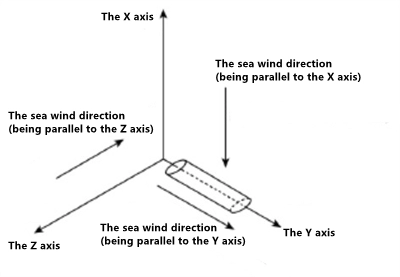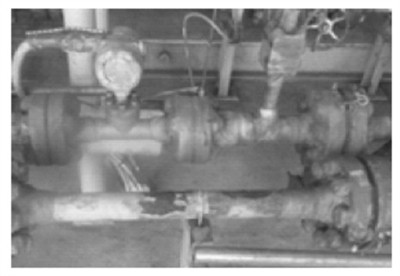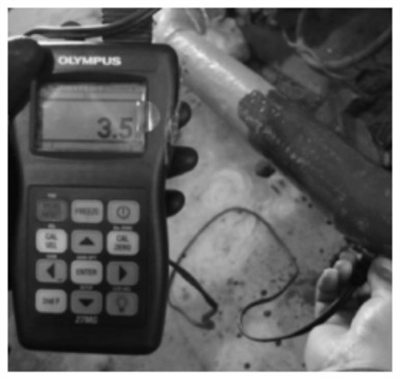As more and more oil and gas platforms are put into use, it is particularly important to ensure the safe production of oil and gas platforms. Studying the factors that affect the service life and safety of production equipment of oil and gas on offshore platforms can timely discover and eliminate potential safety hazards and effectively ensure the safe operation of equipment. As an important part of the offshore platform, the research on the safe operation of the pressure pipeline has become a key link to ensure the safety of the offshore platform.
1. Research on damage to pressure pipelines on offshore platforms
1.1 Technical parameters of offshore platform pressure pipeline
Offshore platform pressure pipelines are mainly divided into production process pipelines and living auxiliary engineering pipelines. According to the process system, the process pipeline can be divided into oil and gas collection, oil and gas separation, oil-water separation, gas drying, oil and gas transporting; process pipelines can be divided into condensate pipelines, production water pipelines and natural gas pipelines. This article mainly takes condensate pipelines, production water pipelines and natural gas pipelines as research objects.
(1) The working pressure of the condensate, natural gas and water pipes in actual production can reach up to 12MPa, and the working pressure of some natural gas exporting system pipelines can reach 20MPa.
(2) The working temperature of most production water pipelines and condensate pipelines is below 50°C, and the working temperature of natural gas pipeline compression pipelines and gas dehydration and drying pipelines is relatively high, close to 170°C.
(3) Most of the materials used in the condensate pipelines in the platform are made from carbon steel (ASTM A106 Gr. B or A333 Gr. 6 and S31803). The main process pipeline for producing water is made from ferritic duplex steel (S31803). The main process pipeline of natural gas is made from carbon steel (A106 Gr. B, A333 Gr. 6 and API 5L GR X65).
1.2 Identification and detection methods of damage to pressure pipelines on offshore platforms
The main detection methods such as wall thickness determination, macro inspection, penetrant testing (PT), magnetic particle testing (MT), ultrasonic testing (UT), hardness testing, ferrite content determination and metallographic testing. The quality of welding seams, possible corrosion, the macroscopic state of the pipeline and the operating state of the pipeline components are spot checked to know the safety status of more than 400 pipelines in three platforms.
Spot checks for wall thicknesses are the main method used to understand the corrosion status of pipes. The macro inspection is mainly used to understand the external corrosion condition of the pipeline and the rationality of the pipeline structure. Penetrant testing and magnetic particle testing are important methods for detecting surface defects in pipes. Ultrasonic testing is used to scan defects in welding seams of pipelines. Hardness testing, metallographic testing, and ferrite content testing are used to perform physical and chemical tests on materials, understand the structure and morphology of materials, and determine the state of materials or the type of cracks.
1.3 Case analyses of damage to pressure pipelines on offshore platforms
The above detection methods were used to investigate the safety status of more than 400 pipelines on three platforms, and various damage cases were classified into three categories, including corrosion thinning, environmental cracking, and other damages. Among them, corrosion thinning can be divided into sublayer corrosion, partial thinning affected by internal media and atmospheric corrosion. Environmental cracking can be divided into cold crack environmental stress-directed cracking and hot crack environmental stress-directed cracking. Other damages include pipe bending, flange sealing surfaces, surface damage to materials or deformation caused by equipment being hit. The damage cases from the external environmental factors and the inside of the pipeline are mainly analyzed in this article.
1.3.1 Corrosion thinning
1.3.1.1 Corrosion thinning due to impact of the marine environment
(1) Underlayer corrosion
The offshore platform is in a humid marine climate environment, which can cause severe external corrosion to carbon steel pipes without failed protection. For some carbon steel pipes with failed thermal insulation protection, the surface of the carbon steel under the thermal insulation layer is prone to form flaky loose scales in a humid environment with a working temperature lower than 121℃, that is, common underlayer corrosion. The main reason is the failure of insulation protection of pipelines and paint protection on the surface of the pipe, which causes the moist air to enter the insulation layer and condense on the surface of the pipeline to form an alkaline environment. This type of damage occurs mainly in pipes with condensed water and ineffective insulation (Figure 1).

Figure 1 Corrosion under the layer of condensate pipelines
(2) Atmospheric corrosion
According to the detection and analysis, it is found that the wet marine environment has serious atmospheric corrosion to the exposed carbon steel pipes. When macroscopically inspecting the pipeline in the windward direction, it was found that the external corrosion of the pipeline is much more serious than that of the pipeline in the leeward or no wind area. The damage to the pipeline perpendicular to the deck surface is better than that of the pipeline parallel to the deck near the surface. Assuming that the direction of the pipe parallel to the deck surface is set as the Y-axis direction (Figure 2), when the sea breeze blows towards the pipe along the Z-axis front, the outer surface of the frontmost pipeline is corroded very seriously. When the wind direction is parallel to the Y axis, the external damage is less. The ocean atmosphere area has high temperatures, high humidity, and high salt content in the air. When the sea breeze with humid salt-containing mist blows directly to the pipeline, a very thin layer of salt-containing moisture film is formed on the metal surface of the front pipeline, so that the surface of carbon steel forms an ionized environment; electrochemical corrosion occurs under the action of oxygen, resulting in overall thinning of the pipeline (Figure 3).

Figure 2 The schematic diagram of the pipeline facing the wind

Figure 3 Overall thinning of atmospheric corrosion of windward pipelines
Most of the water vapor in the sea breeze adheres to the front-row pipeline and forms a water-vapor film due to the blocking of the front-row pipeline, thereby reducing the corrosion of the rear-row pipeline. In the leeward area, another kind of atmospheric corrosion thinning is easy to form, and its main manifestation is partial pitting corrosion on the surface of carbon steel. Alkaline dew adheres to the surface of carbon steel due to the damage to partial anti-corrosion paint or failures of effective protection, forming an electrochemical corrosion environment, partially eroding carbon steel and forming pitting pits (Figure 4).

Figure 4 Partial thinning of atmospheric corrosion
1.3.1.2 Corrosion and thinning caused by the internal medium of the pipeline
The oil and gas mixture extracted from the seabed contains relatively many acid substances such as CO2, H2S and CO as well as microorganisms such as sulfuric acid reducing bacteria, which are easy to cause the dead angle of the pipeline to be corroded. Although the acidic substances are separated through the processes of oil and gas collection, oil and gas separation, oil-water separation, and gas drying, the residual acidic substances are still an important factor affecting the internal corrosion of the pipeline. For most technological processes with strong acid medium such as production water and shaft bottom oil and gas mixture, the pipeline adopts dual-phase steel with good acid resistance. The acid medium has little effect on the wall thickness reduction of such pipelines. However, the condensate and natural gas pipelines on the platform adopt carbon steel pipes. In some slow flow or low-lying places, acidic substances are prone to accumulate, forming an acidic environment, which intensifies the corrosion rate of the pipeline and forms partial thinning (Figure 5).

Figure 5 Corrosion and thinning of the carbon steel pipeline at the lower outlet of the condensate filter (pipes of DN50×5.54 mm)